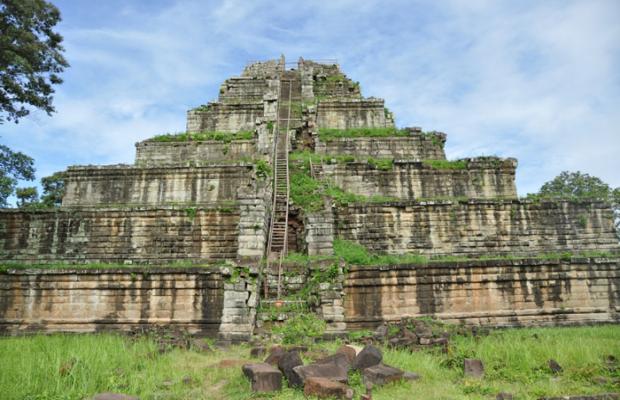Booking : Angkor area + Waterfall + Koh Ker 4Days Tour

Visit the top attraction side such as Mini tour area: Angkor Wat, Angkor Thom (Bayon, Baphon, Terrace of the Elephant, Royal Palace…), Ta Prom. Grand tour area: Preah Khan, Neak Pean, Ta Som, East Mebon, Pre Rup. Outside tour: Bantay Srei, Beng Mealea, Rolouse Group ( Bakong, Preah Ko, Lo Lei), Tole Sap (Kompong Phluk, Kompong Kleang, Chong Kneas).
Phnom Kulen has a distance from Siem Reap town to the northeast about 50km. It is the one of the most famous mountains, and also the local people are considering this mountain as the most spirit mountains in Cambodia. The name of this mountain (Kulen) comes after this mountain consists a lot of lychee trees and fruits. Phnom Kulen also the source for the Siem Reap river. This mountain is nearly 300m high and its side covering of 64sqkm which one in each side of the mountain controls of 8km by 8km. The Phnom Kulen is still serve as the home of the acestics or hermits at the present day. Because this mountain consists many caves for serve as a good spots of those “holy men”to make their meditation or learning or communication to the mountain’s spirits for bringing themselves of becoming the magician or traditional healers so on.
Koh Ker is a remote archaeological site in northern Cambodia about 120 kilometers (75 mi) away from Siem Reap and the ancient site of Angkor. It is a very jungle filled region that is sparsely populated. More than 180 sanctuaries were found in a protected area of 81 square kilometers. Only about two dozen monuments can be visited by tourists because most of the sanctuaries are hidden in the forest and the whole area is not fully demined. Koh Ker is the modern name for an important city of the Khmer empire. In inscriptions the town is mentioned as Lingapura (city of lingams) or Chok Gargyar (sometimes translated as city of glance sometimes as iron tree forest). Under the reign of the kings Jayavarman IV and Harshavarman II Koh Ker was briefly the capital of the whole empire (928–944 AD). Jayavarman IV forced an ambitious building program. An enormous water-tank and about forty temples were constructed under his rule. The most significant temple‑complex, a double sanctuary (Prasat Thom/Prang), follows a linear plan and not a concentric one like most of the temples of the Khmer kings. Unparalleled is the seven‑tiered and 36-metre (118 ft.) high pyramid, which most probably served as state temple of Jayavarman IV. Really impressive too are the shrines with the two‑meter 6 ft 7 in high linga. Under Jayavarman IV the style of Koh Ker was developed and the art of sculpture reached a pinnacle. A great variety of wonderful statues were chiselled. Because of its remoteness the site of Koh Ker was plundered many times by looters. Sculptures of Koh Ker can be found not only in different museums but also in private collections. Masterpieces of Koh Ker are offered occasionally at auctions. These pieces in present times are considered stolen art. The site is about two and half hours away from Siem Reap basic visitors' facilities are now being built. This makes Koh Ker very attractive for anyone who would like to experience lonely temples partly overgrown by the forest. Since 1992 the site of Koh Ker is on the UNESCO tentative world heritage list.







.jpg)





